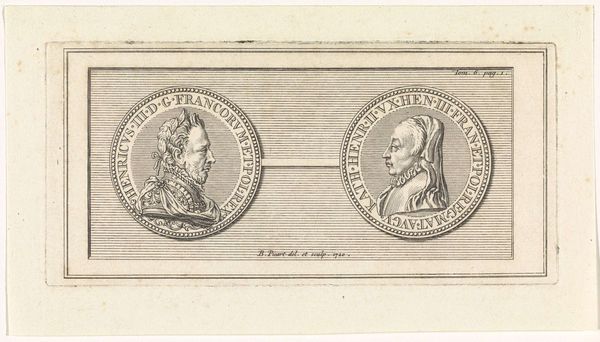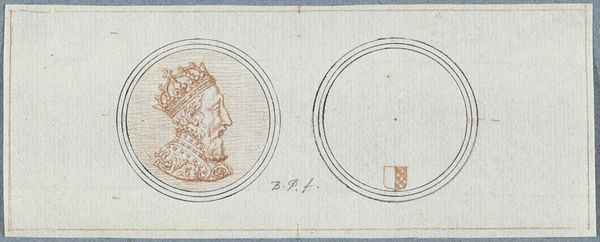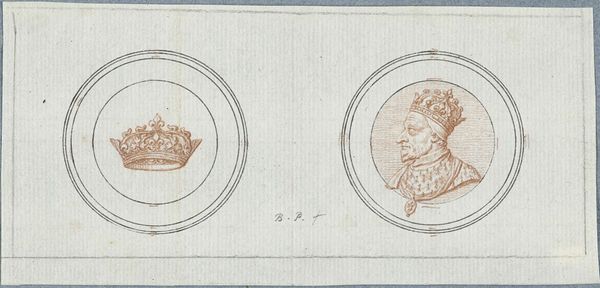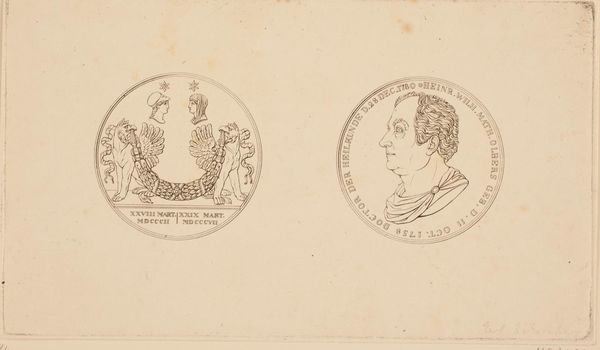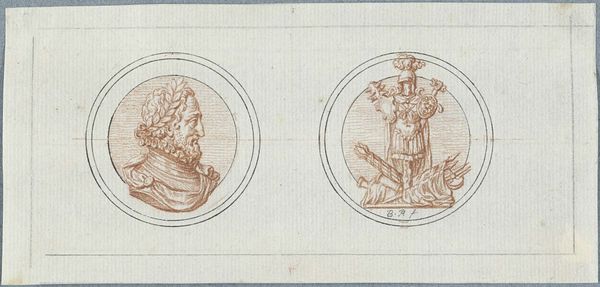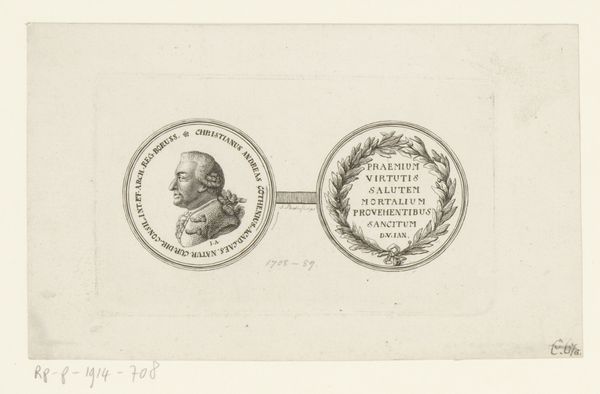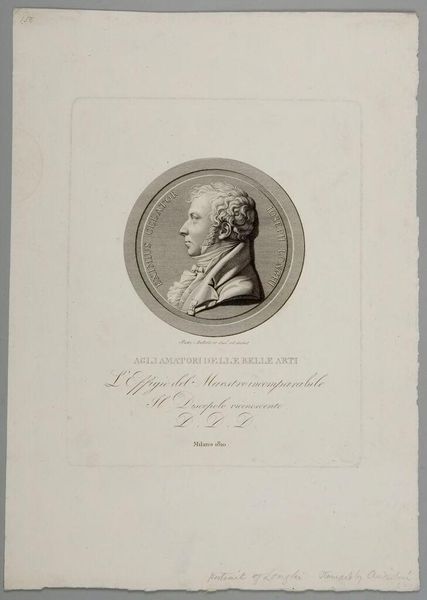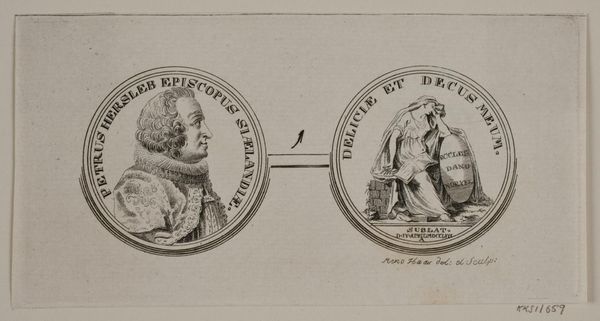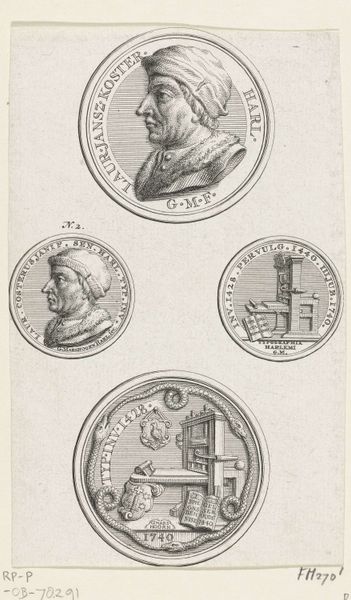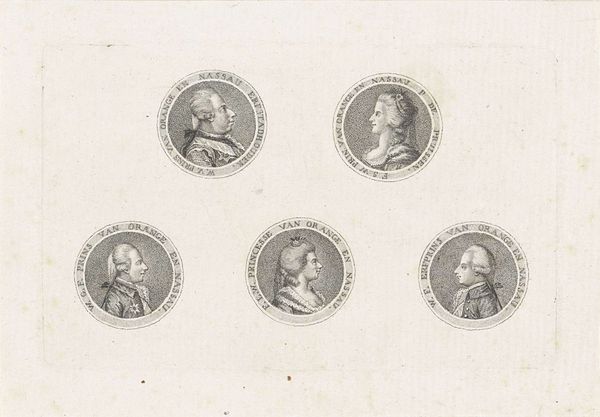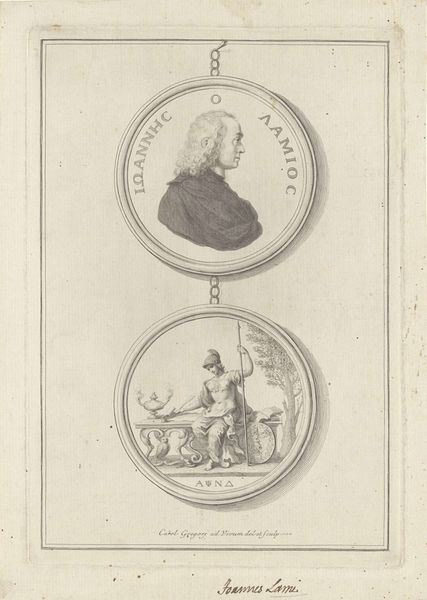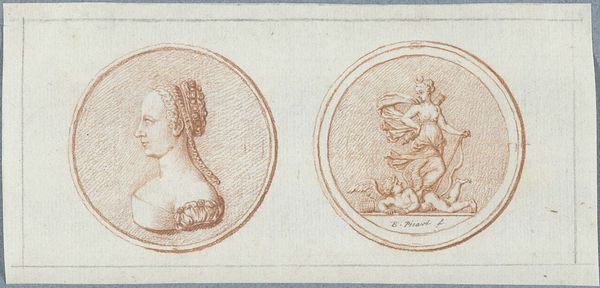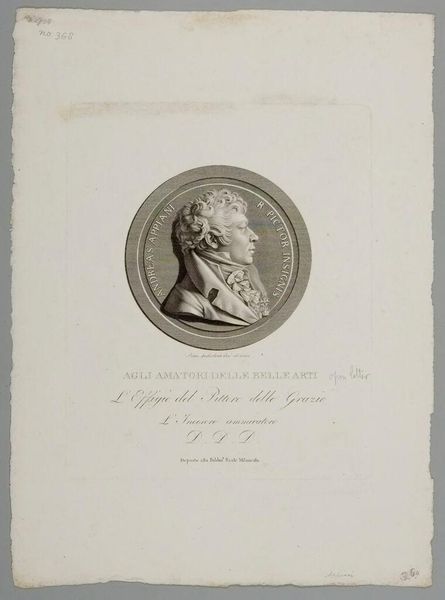
Voor- en achterzijde van een penning met portretten van Hendrik III en Catharina de' Medici 1683 - 1733
0:00
0:00
bernardpicart
Rijksmuseum
drawing, ink
#
portrait
#
drawing
#
baroque
#
ink
#
coloured pencil
Dimensions: height 61 mm, width 131 mm
Copyright: Rijks Museum: Open Domain
Curator: Before us we have "Voor- en achterzijde van een penning met portretten van Hendrik III en Catharina de' Medici," a drawing in ink by Bernard Picart dating from 1683 to 1733, now housed in the Rijksmuseum. Editor: It's fascinating how even in simple ink drawings, portraiture can evoke such a sense of historical gravity. There's a formality here, but something about the direct gazes hints at personality. Curator: Absolutely. These portraits, presented as the front and back of a medal or coin, immediately situate us in the turbulent power dynamics of 16th-century France. Henry III's reign was marked by religious wars and intense political maneuvering. Considering that his mother, Catherine de Medici, practically ruled France for a significant period, her looming presence in this depiction tells us a great deal about gender, power, and influence at court. Editor: I agree. The iconography of the time would imbue these images with complex meaning for those who understood the symbols. Circular portraits often echo coins or medals, symbolizing status, lineage, and historical weight, but the style reminds me of Roman Cameos, the brown ink creating something that could easily resemble ancient artifacts and cultural icons. The visual echoes of wealth and power create continuity with their roles as Royalty. Curator: And we cannot disregard the intersectional aspects: the representation of a king vis-à-vis the significant impact of his mother. Even today, this presents interesting challenges about how power is assumed and transmitted. Was he the sole ruler, or merely an instrument guided by her politics? Editor: The faces have distinct visual features in the work. The meticulous detailing applied to Henry III's ruffled collar and hairstyle immediately catch my eye. Picart carefully renders a tangible essence of masculine regalness. In contrast, Catherine de Medici possesses a serene, almost pious countenance. Her modest head covering conveys not only status but an implied dedication to dynastic responsibility. Curator: A reading emphasizing those oppositions, feminine influence vs. masculine authority, would reinforce common stereotypes. However, consider if both strategically project specific images to exert dominance differently. Understanding her impact challenges the narrative. Editor: Fascinating point. This artistic representation offers, more than mere visual history, complex social narrative through the lenses of representation, cultural continuity, and authority. Curator: Yes, thinking of this artwork allows one to navigate discussions around power and cultural influence within evolving theoretical perspectives. It’s powerful indeed.
Comments
No comments
Be the first to comment and join the conversation on the ultimate creative platform.
